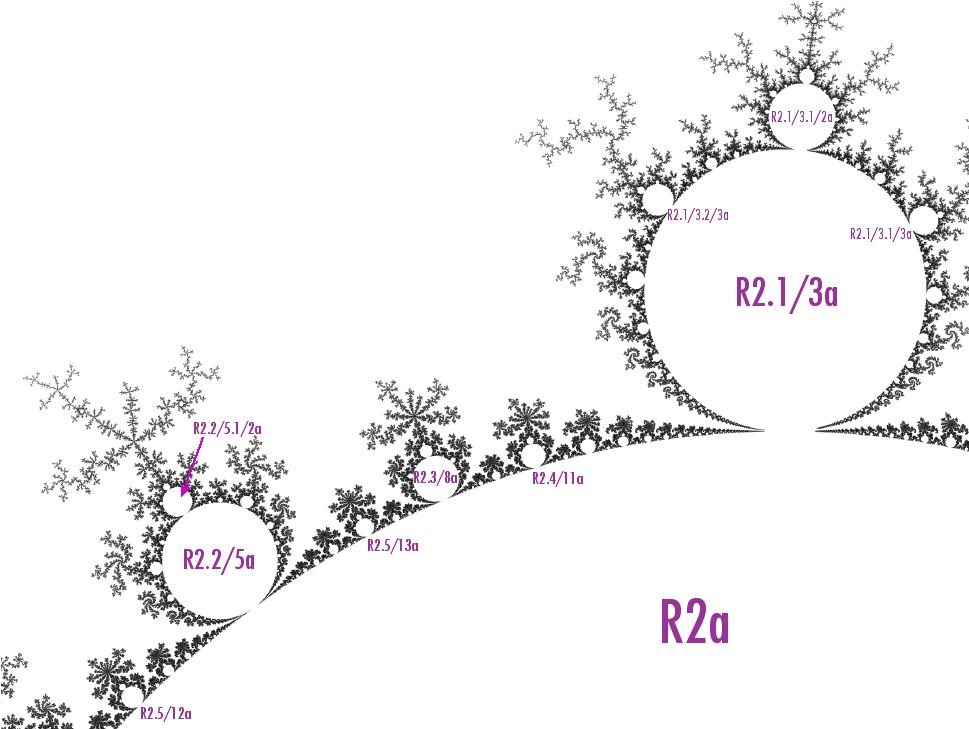Smallest
Robert P. Munafo, 2012 Apr 16.
The term "smaller" is sometimes used in this encyclopedia to refer to a relationship between mu-atoms that are siblings: A mu-atom is "smaller" if it has a higher period. The word is used in this way on the pages: binary search for internal angle, common smaller neighbor, and smaller neighbor. See also larger.

R2.2/5a is "smaller" than R2.1/3a because it has a higher period
Being "smaller" in this sense does not necessarily mean that a mu-atom is physically smaller: for example, R2.1/7a is physically smaller than R2.3/8a, but is larger in the sense meant here, because it has a lower period.
|
In the images above, both mu-units are shown at the same scale (image width and height are 0.1 units on the real and imaginary axis respectively). But the mu-atom with the higher period is also physically larger. This is a counter-example to the ordinary rule that siblings with a higher period are physically smaller. The discrepancy is accounted for by the sin(2π N/M) term in the "Milnor's approximation" formula shown in the secondary continental mu-atom article.
The smallest mu-molecule of any given period is located on the real axis, and most of them are very close to the tip. See the R2t Series article for details.
revisions: 20120416 oldest on record; 20230525 link to R2t Series article
From the Mandelbrot Set Glossary and Encyclopedia, by Robert Munafo, (c) 1987-2024.
Mu-ency main page — index — recent changes — DEMZ
This page was written in the "embarrassingly readable" markup language RHTF, and was last updated on 2023 May 25.
 s.27
s.27).jpg)
).jpg)